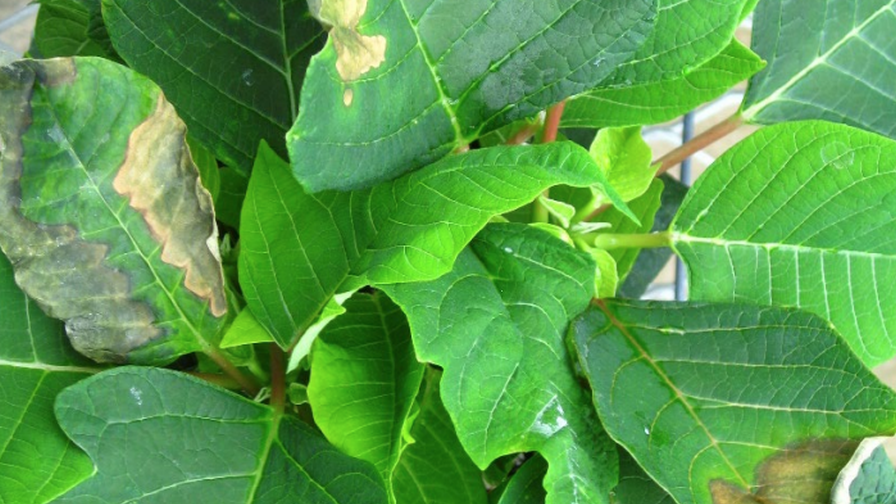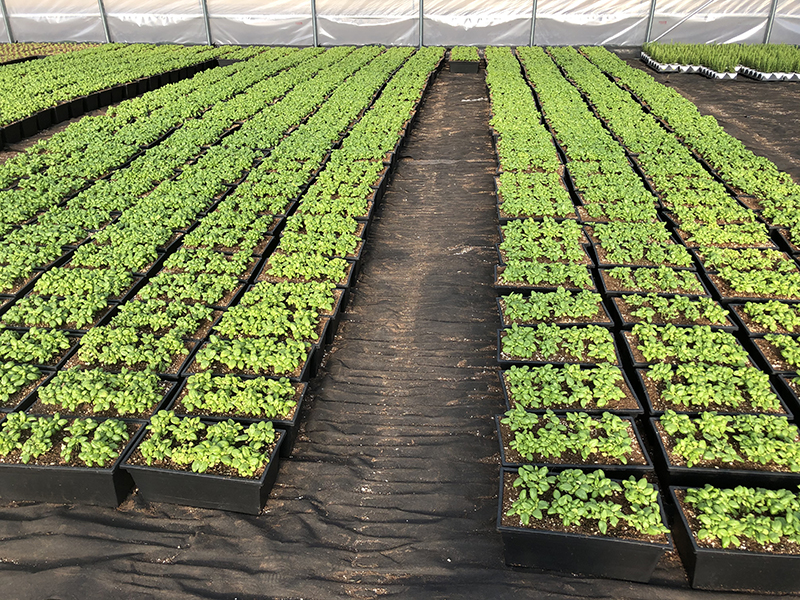Monitoring Leaf and Stem Disorders in Poinsettias

Leaf curl in poinsettias; Photo; Roberto Lopez
Earlier this month, we reported on a blog post from OnFloriculture.com on monitoring for pests and diseases in poinsettias. This week, we turn to the identification of physiological disorders and leaf abnormalities in poinsettias. Given that poinsettias are propagated during the hottest months of the year and have a very long production time, they are prone to such disorders. Occasionally, greenhouse growers observe irregularities on the leaves or stems of their crop that are not caused by insects or diseases.
In a recent eGRO alert, Michigan State University’s Roberto Lopez and Heidi Lindberg note that environmental factors during both propagation and production, such as drought stress, exposure to high light or temperatures, or changes in relative humidity, can all cause poinsettia leaf abnormalities, distortion, crippling, or puckering. These issues are often the most difficult to diagnose, as you cannot isolate the problem in a petri dish or visually observe an insect or pathogen. Reports of leaf abnormalities align with the traditional occurrence of these symptoms that often occur from mid-September to early October.
Poinsettia leaf distortions often occur on young or immature leaves and are believed to be caused by many factors. Leaf and meristem distortions can be caused by herbicide exposure, but if you can rule out an exposure, there are many environmental and cultural factors that can lead to leaf distortions. Physical damage during pinching, ruptured cells and latex residue can cause the expanding leaf to become distorted. Therefore, care should be taken to avoid latex from dripping onto the plant during pinching.
Leaf curl with browning/necrotic tissue is often a symptom of heat stress, leaf scorch, or desiccation. The water stress symptoms on poinsettia typically occurs on leaves in the middle portion of the plant or leaf. As your crop is actively growing when greenhouse temperatures and light levels are high, it is essential that you provide adequate irrigation to avoid extreme conditions (excessively dry or wet) that can result in leaf desiccation, poor growth, and disease susceptibility. Excessively dry plants should not be irrigated with cold water as uptake and transport by the roots can be inhibited for a short interval. Under extended drought stress, lower leaves will turn yellow, brown, and eventually senesce.
To learn more, including tips on dealing with poor branching and mechanical injury, check out the original eGRO alert here.









